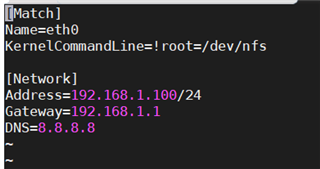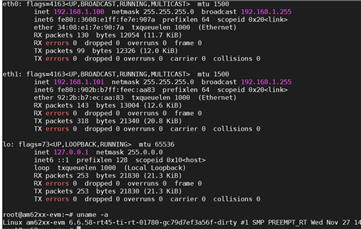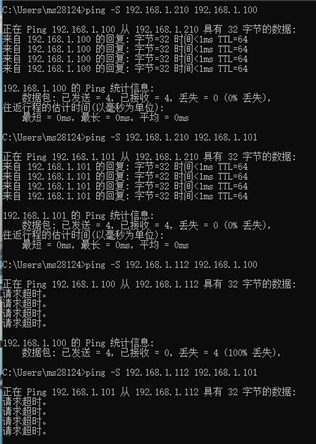Other Parts Discussed in Thread: SK-AM62
Tool/software:
hi
Based on sk-am62, during the sdk8.6 process, both networks were configured to the same network segment, and 192.168.1.100 and 192.168.1.200 were found to be unable to ping the two network cards.
thanks







